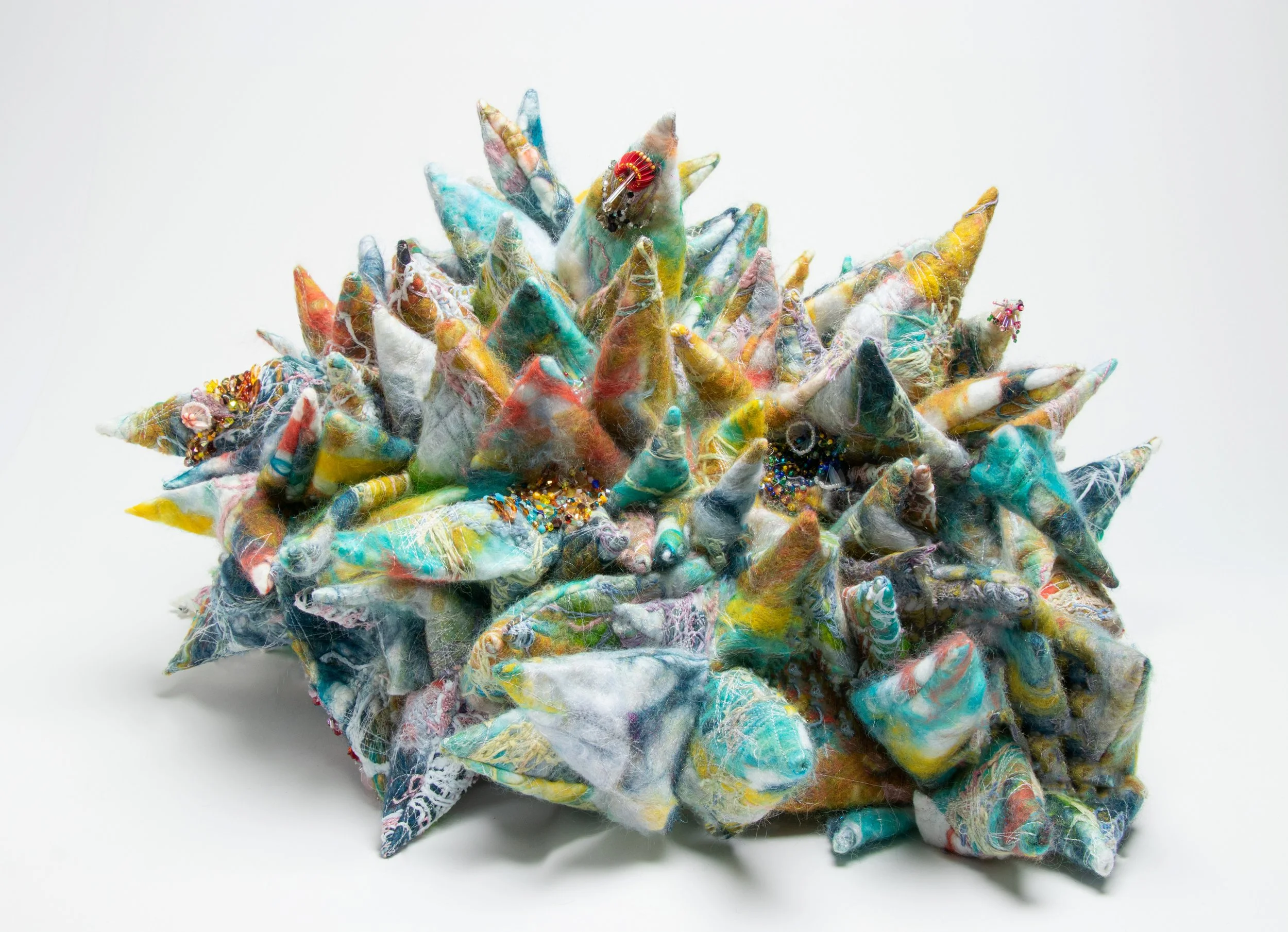Artist in conversation: Shiqing Li
“ I believe that amid negativity and pain, I am constantly seeking positivity”
Shiqing Li, a talented textile designer currently studying at Parsons, utilises art as a powerful medium to express her experiences and thoughts. With a unique perspective, she uplifts seemingly negative aspects through her expressive creations. Shiqing understands that amidst adversity and pain, there is always a search for positivity. Drawing inspiration from her own life, she delves into the depths of emotions, relationships, and feelings. For Shiqing, the process of creating art is a continuous journey of discovery. In the past, she had a profound fascination with palm trees, which is evident in her prints characterised by an interplay of textures, colours, and emotions. Shiqing cherishes the memories of her past self, leaving her favourite elements imprinted everywhere.
What initially inspired you to become an artist, and how did you develop your unique style?
I once came across a saying, “Every person who bravely emerges from pain is an artist”;Inspired by this, I began using art as a form of expression to convey my experiences and thoughts. For me, art serves as a medium to communicate, in an uplifting manner, aspects that might be considered ‘negative’; It’s somewhat akin to notions like ‘human nature is inherently lonely’ or ‘human nature is inherently wicked’ However, I consistently believe that amid negativity and pain, I am constantly seeking positivity.
In terms of subject matter, what themes or motifs do you frequently explore in your work, and what draws you to these topics?
I often seek inspiration from my own life, exploring emotions, relationships, and feelings. I view the process of creating art as a learning experience. There was a time when I had a deep fondness for palm trees, reflected in my prints with a variety of textures, colours, and emotions. Although they may seem somewhat naive now, I cherish the memories of a past self imprinting favourite elements everywhere.
Can you discuss a specific piece or project that challenged you as an artist, and how you overcome those challenges?
When working on projects centered around the theme of female fertility, I struggled to delve deeper. So, I engaged in conversations with many mothers, seeking their stories to gain a better understanding. I believe that, often, we need to talk or discuss with others. However, the key is not to expect others to provide the answers you seek, solve your problems, or tell you how to create. Sometimes, conversation serves as a form of expression and catharsis, enriching your work with greater empathetic resonance.
How do you navigate the balance between self-destruction and re-creation as a way towards conscious Happiness?
I struggle to find balance; internal conflicts are my norm. Creating art to ease my emotions is a way of rescuing myself. Yet, this doesn’t apply to everyone. If happiness isn’t found in art, don’t force yourself to be an artist. Embracing imperfections and having the courage to be disliked are essential for self-acceptance.
How do you stay connected with other artists and keep up with new developments and trends in the art world?
Social media, various fine art shows, news about art, and even information about auctions.
How do you incorporate feedback from critics and audiences into your artistic practice, and how do you balance this feedback with your own artistic intuition?
I rarely listen to other peoples opinions. Because there are so many suggestions, I can’t afford to choose only the ones I like, or the ones I hate, to make changes. I don’t mind people judging my work, but I usually don’t make changes because of them. It’s important to stand up for yourself, and there is no such thing as ugly art. I’m sure everyone has encountered a situation where they think a piece of art is ugly, but there are still people who can appreciate it. Art should not be appreciated by a group of artists alone, it should enter peoples lives, so that everyone can see, in that case, why worry about what others say.
How do you stay motivated and inspired despite any setbacks or creative blocks you may encounter?
Go out in nature more often and absorb its magnetism and energy. I truly believe so, nature is pure, more exposure to nature and then the change of seasons, one can figure out a lot of things.
Looking ahead, what are your long-term goals and aspirations as an artist, and how do you plan to achieve them?
I want my work to be seen by more people, by people who have never made or been exposed to art. I think that is a very interesting thing. It’s like being able to use chat GPT without knowing AI.





